![Niblock, Phill: G2,44+/X2 [CD + BOOK] (Room40) Niblock, Phill: G2,44+/X2 [CD + BOOK] (Room40)](https://www.teuthida.com/productImages/misc4/29368.jpg)
A gorgeous and rich drone composition from New York composer Phill Niblock, intended for maximum volume to bring out shifting and slowly interacting harmonics from a nonet of incredible guitarists — David First, Rafael Toral, Robert Poss, Susan Stenger, Alan Licht, Kevin Drumm, Lee Ranaldo, and Thurston Moore — with Jim O'Rourk engineering the album for optimal warmth.
Out of Stock
Quantity in Basket: None
Log In to use our Wish List
Shipping Weight: 3.00 units
Sample The Album:
Phill Niblock-composer
David First-guitar
Rafael Toral-guitar, engineer
Robert Poss-guitar
Susan Stenger-guitar
Alan Licht-guitar
Kevin Drumm-guitar
Lee Ranaldo-guitar
Thurston Moore-guitar
Jim O'Rourke-engineer
Click an artist name above to see in-stock items for that artist.
UPC: 739027482376
Label: Room40
Catalog ID: RM 4122CD
Squidco Product Code: 29368
Format: CD + BOOKLET
Condition: New
Released: 2020
Country: Australia
Packaging: Sleeve w/ 24-page book
Recorded by the artists, mixed by Rafael Toral and Robert Poss, mastered by Jim O'Rourke.
"In 2001, Phill Niblock wrote, 'You should play the music very loud. If the neighbors don't complain, it's probably not loud enough.' In 2019, Niblock can no longer host his annual six hour-long solstice concert at the Experimental lntermedia loft; not only did the neighbors complain, the landlord sued. But the validity of his prescription is undiminished, for it takes sonic volume and spatial confinement to unlock his music's true nature.
Give the sound waves a boost and something hard to smack against, and they begin to shiver and multiply so that tones transform tones and every turn of the head (or every new room) yields a new listening experience. But 'Guitar Too, For Four' is notable in Niblock's oeuvre for its independence from loudness. While it sounds great turned up, the additive process that yielded the CD's two versions has resulted in music that changes most rewardingly, even when heard at modest volume.
Victor Frankl opined that in the hierarchy of essential human motivations, meaning eclipses pleasure. In some ways, this music hews closer to the pleasure principle. Once you let go of the yearning for tunes and grooves, it's a sensuous delight to dunk yourself in the warm sound-bath of his music. And Niblock would be the first person to scotch any efforts to assign the sort of cosmic significance that certain other drone-oriented minimalists did to their art.
But consider this notion; Niblock's music is fundamentally social. It only truly happens in spaces where people gather. While he does much of the composing and assembling of this music alone, Niblock didn't treat 'Guitar Too, For Four' as finished until he got some more people in on the act. He asked Rafael ToraI and Jim O'Rourke to contribute to a CD edition. And when O'Rourke declined to play on his own production, but instead invited Kevin Drumm, Alan Licht, Thurston Moore, and Lee Renaldo to do the honors, Niblock's reaction was the more, the merrier. To the extent that connecting people is an essentially meaningful activity, this music is the connective tissue of meaning."-Bill Meyer, from the liner notes
Artist Biographies
• Show Bio for Phill Niblock "Phill Niblock is a New York-based minimalist composer and multi-media musician and director of Experimental Intermedia, a foundation born in the flames of 1968's barricade-hopping. He has been a maverick presence on the fringes of the avant garde ever since. In the history books Niblock is the forgotten Minimalist. That's as maybe: no one ever said the history books were infallible anyway. His influence has had more impact on younger composers such as Susan Stenger, Lois V Vierk, David First, and Glenn Branca. He's even worked with Sonic Youth's Thurston Moore and Lee Renaldo on "Guitar two, for four" which is actually for five guitarists. This is Minimalism in the classic sense of the word, if that makes sense. Niblock constructs big 24-track digitally-processed monolithic microtonal drones. The result is sound without melody or rhythm. Movement is slow, geologically slow. Changes are almost imperceptible, and his music has a tendency of creeping up on you. The vocal pieces are like some of Ligeti's choral works, but a little more phased. And this isn't choral work. "A Y U (as yet untitled)" is sampled from just one voice, the baritone Thomas Buckner. The results are pitch shifted and processed intense drones, one live and one studio edited. Unlike Ligeti, this isn't just for voice or hurdy gurdy. Like Stockhausen's electronic pieces, Musique Concrete, or even Fripp and Eno's No Pussyfooting, the role of the producer/composer in "Hurdy Hurry" and "A Y U" is just as important as the role of the performer. He says: "What I am doing with my music is to produce something without rhythm or melody, by using many microtones that cause movements very, very slowly." The stills in the booklet are from slides taken in China, while Niblock was making films which are painstaking studies of manual labour, giving a poetic dignity to sheer gruelling slog of fishermen at work, rice-planters, log-splitters, water-hole dredgers and other back-breaking toilers. Since 1968 Phill has also put on over 1000 concerts in his loft space, including Ryoji Ikeda, Zbigniew Karkowski, Jim O'Rourke." ^ Hide Bio for Phill Niblock • Show Bio for David First "It seems reasonable to assert that David First has had a rather eclectic musical career. He has played guitar with renowned jazz innovator/pianist Cecil Taylor (culminating in a legendary Carnegie Hall concert) and the rock band Televisionís Richard Lloyd. He has created electronic music at Princeton University and led a Mummerís String Band in bicentennial parades. He has played in raucous, drunken bar bands and in concert halls with classical ensembles. As a composer he has created everything from finely crafted pop songs to long, severely minimalist soundscapes. And his influence on modern music may be incalculable: a 45 single release, The Zipper, by his punk-era rock band, The Notekillers, was cited by Sonic Youthís Thurston Moore as one of the songs he played for the rest of the band when they were starting out. Moore recently called it a "mind-blowing instrumental single" in the British rock magazine Mojo. Known for his dense, mesmerizing drone structures - which he has been experimenting with since his teens - as well as his intense and highly unusual, minimalist approach to the guitar, First has been a pivotal figure in the world of experimental music, releasing recordings on O.O. Discs, Ecstatic Peace and Analysand as well as works on the CRI, Aerial, Homestead, and EMF labels. A recent CD entitled "Dave's Waves - A Sonic Restaurant" - the music from his sound installation of the same name in Lier, Belgium - was the first international release on the highly regarded Italian label ants. His music has been performed in the USA at The Kitchen, Bang On A Can, Central Park Summerstage, the CMJ Music Marathon, Joeís Pub, The Knitting Factory, Tonic, Merkin Hall, CBGBís, and The Spoleto Festival. He has also been presented extensively in Europe - appearing at Podewil, the USArts Festival, Institut Unzeit (Berlin) as well as at De Ijsbreker (Amsterdam), the Heidelberger Festival for Experimental Music and Literature (Heidelberg), ZwischenTone Festival (K-ln), The Impakt Festival (Utrecht), Het Apollohuis (Eindhoven), and the Brugge Concertgebeouw (Brugge). First has also presented sound installations at Kunstforeningen (Copenhagen), the Uppsala Konstmuseum (Uppsala), Exit Art (New York), Voorkamer (Lier) and Studio Five Beekman (NYC). [...]" ^ Hide Bio for David First • Show Bio for Rafael Toral "Rafael Toral, born in Lisbon, 1967 has been intrigued by the potential of sound and the functions of music since he was a teenager. As a composer and performer, he has been deeply involved with Rock, Ambient, Contemporary, Electronic and Free Jazz music in different periods of his life. Working with electric guitar and electronics, in the 1990's he created a blend of Ambient and Rock and recorded acclaimed albums like Wave Field or Violence of Discovery and Calm of Acceptance. By the early 2000's he arrived to a sense of accomplishment about his previous 15 years of work, also realizing the world needed a different creative response. He decided to start something new, as radically different from the previous phase as possible. In a transition to vulnerable action, he launched the alien-sounding Space Program in 2004, using experimental electronic instruments. It's been an ambitious long-term project exploring an approach to electronic music based on silence, through decision making and physical gesture, in a way inspired by post-free Jazz. The resulting music, "melodic without notes, rhythmic with no beat, familiar but strange, meticulous but radically free - riddled with paradox but full of clarity and space", has been described as "a brand of electronic music far more visceral and emotive than that of his cerebral peers". In the last 15 years he's been thinking and practicing an understanding of silence as "space", with a clear function in music creation but also as a metaphor for social relationships and a statement on information and sensory overload. Performing solo or in numerous collaborations (including Jim O'Rourke, Jim Baker, Sei Miguel, Chris Corsano, John Edwards, Evan Parker, Tatsuya Nakatani, Manuel Mota, Alvin Lucier, Phill Niblock, Christian Marclay, Sonic Youth, Rhys Chatham, Lee Ranaldo, C Spencer Yeh, and many others), he has been touring throughout Europe, Canada, USA, Mexico, South Korea, Japan, New Zealand and Australia. Also active in visual and spatial arts, Toral has produced video and several installations from 1994 to 2003. In 2014 he relocated to the mountains in central Portugal for a more sustainable life. In 2017, having concluded the Space Program's recording series, Toral is entering a wider field with multiple directions and possibilities. From his mountain studio, he also offers mastering services." ^ Hide Bio for Rafael Toral • Show Bio for Robert Poss "Robert Poss fell in love with electric guitars and basses in 1964 at an age when he still believed one plugged them directly into a wall socket. He memorized the Fender Guitars Catalog and passed through a succession of rock and blues bands before discovering punk in the late '70s and staring to write, record and release his own material. He joined Rhys Chatham's ensemble in the early '80s and remained a core member for several years. He also began performing and recording the music of eclectic electronicist Nicolas Collins, whom he had known since the mid-1970s. Eventually Poss realized that the sound of feedback, distortion and ringing overtones was "the cake, not the frosting" and began trying new ways of writing songs by layering simple chord patterns over drones and looped riffs. It was his initiative that gave rise to Band Of Susans in 1986, and his early experiments became the foundation of their sound. Band Of Susans went on to release two EPs and five LPs (all produced by Poss) before disbanding in 1995. Interviewed in The Wire, Steve Albini stated that "I think Robert Poss...is an enormously underrated guitar theorist. A lot of his approaches to the density of guitar are completely overlooked in any discussion about guitar.....The way he structures the song around the drone instead of finding a drone to fit into the song I think is wholly unique." In 1986, he formed the wall-of-guitars group Band Of Susans, which Rolling Stone Magazine described as "adamantly arty, brainy, visceral and bracing." In 2002 Poss, released two companion solo CDs Distortion Is Truth and Crossing Casco Bay on Trace Elements Records. At the time, Tape Op Magazine described him as a "guitar genius, drone meister ...the master of treated and manipulated guitars." Since his 2002 releases, Poss has composed and performed music for choreographers Sally Gross, Alexandra Beller and Gerald Casel, has worked with ex-Band Of Susans member Susan Stenger on a 96-day musical installation for the Musée d'art Contemporain in Lyon, France, performed at the premier of composer Phill Niblock's piece "Stosspeng" in Krems, Austria and contributed music to an Albert Maysles/Kristen Nutile documentary, Sally Gross: The Pleasure Of Stillness. In 2009 he performed with Rhys Chatham and Robert Longo at a Metropolitan Museum of Art retrospective and participated in Chatham's Crimson Grail project for 200 guitars at Lincoln Center. He has collaborated with Austrian visual artist Margret Wibmer and filmmaker Cat Tyc, and has written guitar-centric articles for The Leonardo Music Journal and The Tone Quest Report. He has also performed and recorded with David Dramm, Ben Neill and Bruce Gilbert (Wire) and produced records for The Meat Joy, Combine, and Seth Josel. He resides in New York City and continues to perform his guitar and electronics pieces in the U.S., the U.K. and Europe." ^ Hide Bio for Robert Poss • Show Bio for Susan Stenger "Susan Stenger is a sound artist whose practice transcends boundaries. An accomplished flautist and specialist in performing the music of John Cage, Christian Wolff and Phill Niblock, she was also a co-founding member (with longtime ally Robert Poss) of wall-of-guitars group Band Of Susans and instigator of all-bass art band Big Bottom. Stenger has toured as a guitarist with Rhys Chatham and as a bassist with The Creatures, John Cale and Nick Cave and has collaborated with an eclectic range of artists in addition to Poss, including dancer/choreographer Michael Clark, writers Iain Sinclair and Alan Moore, scrap-metal percussionist FM Einheit and visual artist Cerith Wyn Evans. In 2006 she was commissioned by curator Mathieu Copeland to make an exhibition-length sound installation for Musée d'Art Contemporain de Lyon, which became the 96-day-long Soundtrack for an Exhibition and explored song form on multiple levels of genre, time and detail. In 2011 she composed music for Pat Collins' film Tim Robinson: Connemara, a documentary about the renowned writer and cartographer. Stenger's soundtrack was based on a study of Irish sean nós singing, the Connemara landscape, and a close reading of Robinson's work. As part of Newcastle's AV Festival, Stenger's sound work Full Circle inhabited the domed entrance to the Civic Centre in March 2012 and was subsequently presented in Toronto and Stockholm. Her 2014 AV installation, Sound Strata of Coastal Northumberland, transformed the geologic into the sonic using an 1838 cross-section geological diagram as a graphic score, layering instrumental sounds, melodic patterns and signature rhythms from Northumbrian folk music and dance. Sound Strata toured the Northumberland coast throughout 2015 and resulted in a 96-page full-colour publication with CD soundstrata.co.uk. Stenger recently collaborated with Jesse Jones and Olwen Fouéré on Tremble, Tremble, creating the soundtrack for Jones' multimedia work featuring Fouéré that represented Ireland at the 2017 Venice Biennale." ^ Hide Bio for Susan Stenger • Show Bio for Alan Licht "Born in 1968 and raised in New Jersey, I took guitar lessons at the age of ten and went on to play in typical high school cover bands and to study jazz guitar privately with Buck Brown. In my late teens, as my interests expanded to the avant-garde, I attended a seminar on improvisation given by noted west coast guitarist Henry Kaiser. Enrolling at Vassar College, I studied electronic music with Linda Fisher and composition with Annea Lockwood and Richard Wilson. By the time I graduated in 1990, I had already published articles on Minimalist composers La Monte Young, Tony Conrad, Rhys Chatham, and Charlemagne Palestine, and had recorded with former John Coltrane drummer Rashied Ali (on Rudolph Grey's Mask of Light LP). Relocating to New York City, I focused on pursuing free improvisation (with Rudolph Grey's group the Blue Humans and guitarist Loren Mazzacane Connors) as well as indie rock (the bands Love Child and Run On, as well as a brief stint with legendary 60s psychedelic rock band Arthur Lee & Love). I also began developing a repertoire of structured improvisation pieces for solo electric guitar, documented on a series of albums starting with 1994's Sink the Aging Process. These brought together my interests in reharmonization (from jazz and classical music), process, repetition, and extended duration (from Minimalism), and the textural vocabularies of rock and noise music. The albums also include tape pieces and organ works. In 1998 I began writing frequently for the British experimental music magazine The WIRE, doing several cover stories and other features. In 2000 I started handling bookings at Tonic, the estimable New York venue dedicated to showcasing a wide range of alternative music, from free improvisation to underground rock to electronica to the jazz and classical avant-gardes. This brought me into contact with numerous musicians, and I performed at Tonic myself countless times. In 2001 I co-founded the ensemble Text of Light with Sonic Youth guitarist Lee Ranaldo, a project that brings together free improvisation with screenings of historic examples of experimental cinema. Text of Light emphasizes the chance correspondences between what is happening onscreen and what is happening in the music, as a kind of live, real-time mixed-media collage. Subsequently I have made audiovisual collaborations with video artist and long-time Merce Cunningham associate Charles Atlas and Emmy-winning painter, designer and comics artist Gary Panter, which operated under similar principles. 2002 saw the publication of my first book, An Emotional Memoir of Martha Quinn, an extended personal essay about coming of age as a rock fan and musician. In 2007 my second book, Sound Art: Beyond Music, Between Categories was published - significant as the first full-length study of sound installations and sound sculpture to be published in English, and the first to examine the genre mainly from an art historical, rather than a quasi-philosophical, viewpoint. Any free improviser is also an audience member, as he or she is hearing the music for the first time. I brought this idea to performances I organized under the name the Digger Choir at Issue Project Room in 2003-2004 that conflated the roles of audience member and performer. Everyone who attended was responsible for performing the music-singing John Stevens' Sustained Piece and Yoko Ono's John Let's Hope For Piece as well as my own pieces like Subway Piece, in which they were instructed to read a magazine or book they would ordinarily read to themselves in transit out loud. The idea of speaking texts aloud that are meant to be read silently also occurs in two of my recent sound installations: On Deaf Ears (2009), in which an article about the possible hearing loss incurred by listening to music on iPod earbuds at high volume was recorded being read aloud, and played as a loop on AVA Gallery's outdoor speakers; and Cross Promotion (2010), in which the proprietors of both AVA and Diapason read aloud their press releases for coming exhibitions, the recordings were then installed in each other's gallery space. These pieces play not only on sound art's investigations of latent sounds, but on my dual work practice as a musician and a writer. In 2010 I started a project called Title TK with media artist Cory Archangel and curator Howie Chen. Cory, Howie and I are all guitarists. Considering ourselves a band, in live appearances we walk onstage with guitars but never plug them in or play; instead we simply talk to each other (mostly about music). These talks are improvised, and to me represent a negotiation between spoken and musical languages, underlining the linguistic implications of musical vocabularies and the conversational aspects of group improvisation. They also represent an application of "post- studio art" ideas to music, in removing what would be expected as essential content from the rock band format. Finally, they build upon my personal history, making a conceptual accommodation between my parallel existences in the 90s as a rock band member and free improviser. More recent activities include recording and touring with Lee Ranaldo & the Dust, an improv trio with Aki Onda and artist/filmmaker Michael Snow, a duo with Yeah Yeah Yeahs drummer Brian Chase, and a book-length interview with Will Oldham, Will Oldham on Bonnie "Prince" Billy (Faber & Faber (UK), W.W. Norton (US), Contra (Spain), 2012)." ^ Hide Bio for Alan Licht • Show Bio for Kevin Drumm "Kevin Drumm is an experimental musician based in Chicago, United States Emerging from the city's improvised music scene, in the 1990s he became one of the world's pre-eminent prepared guitar players. Since then his work has expanded to include electroacoustic compositions and live electronic music made with laptop computers and analog modular synthesizers. His early recordings contain mostly sparse, quiet sounds; recent works have been more loud and dense. Drumm has collaborated with many artists working in similar fields, including Japanese guitarist Taku Sugimoto, multi-instrumentalist and producer Jim O'Rourke, and many European improvisers such as Swedish saxophonist Mats Gustafsson and German trumpeter Axel Dörner. He has also worked with the artist group Simparch, composing a piece for their installation Spec, shown at Documenta XI in Kassel, Germany and at the Renaissance Society in Chicago. Drumm has also worked with saxophonist Ken Vandermark's Territory Band, which brings together American and European players who work in both jazz and free improvisation.: ^ Hide Bio for Kevin Drumm • Show Bio for Lee Ranaldo "Lee Mark Ranaldo (born February 3, 1956) is an American musician, singer-songwriter, guitarist, writer, visual artist and record producer, best known as a co-founder of the alternative rock band Sonic Youth. In 2004, Rolling Stone ranked Ranaldo at number 33 on its "Greatest Guitarists of All Time" list. In May 2012, Spin published a staff selected top 100 guitarist list, ranking Ranaldo and his Sonic Youth bandmate Thurston Moore together at number 1. Ranaldo was born in Glen Cove, Long Island, studied art and graduated from Binghamton University. He has three sons, Cody, Sage and Frey, and is married twice, first with Amanda Linn in 1981 but later divorced, and now with experimental artist Leah Singer. Ranaldo started his career in New York in several bands, and joined the electric guitar orchestra of Glenn Branca. In this orchestra he played mainly electric guitar, but also some of Branca's harmonic guitars Branca had designed and built himself. In 1981, he and David Linton briefly joined the band Plus Instruments formed by Truus de Groot. With this line-up they recorded the album February - April 1981, released on the Dutch Kremlin label. After the release of the album, Ranaldo left the band and started Sonic Youth with Thurston Moore and Kim Gordon." ^ Hide Bio for Lee Ranaldo • Show Bio for Thurston Moore "Along with his work as part of the acclaimed art/punk rock band Sonic Youth, Thurston Moore [b. born July 25, 1958] also pursued numerous solo and side projects, including Even Worse and the Dim Stars with Richard Hell. His first solo album, 1994's Psychic Hearts, featuring ex-Half Japanese guitarist Tim Foljahn and Sonic Youth drummer Steve Shelley, had an appropriately offhand feel but was far from sloppy. Along with carrying Sonic Youth into the 2000s, Moore collaborated with artists including DJ Spooky and Nels Cline, wrote music reviews and other pieces for Arthur magazine, and issued a book, Mix Tape: The Art of Cassette Culture, in 2005. His second song-based album, Trees Outside of the Academy, arrived in 2007, and featured largely acoustic arrangements and cameos by Shelley, Samara Lubelski, and Dinosaur Jr.'s J Mascis. In 2010, Moore guested on the Hat City Intuitive's A Ticket for Decay and began laying the foundation for another solo effort, Demolished Thoughts, which appeared the following year. Following Moore's separation from bandmate, wife, and partner Kim Gordon in late 2011, Sonic Youth was put on indefinite pause. Nevertheless, Moore and Gordon collaborated with Yoko Ono the following year on the album YOKOKIMTHURSTON. By 2012, Moore had begun touring and recording with new act Chelsea Light Moving, as well as joining black metal group Twilight on guitar. The year 2013 saw the release of @, a collaborative album of sax/guitar improvisations with fellow N.Y.C. fringe dweller John Zorn. Arriving in 2014, The Best Day saw Moore shedding the softer acoustic moods of Demolished Thoughts for a return to his signature rock sprawl and daydreamy lyrics. Two years later, he issued the single "Feel It in Your Guts," which was available to anyone who donated to Bernie Sanders' presidential campaign. For 2017's Rock n Roll Consciousness, Moore reunited with his backing band for The Best Day -- Sonic Youth drummer Shelley, My Bloody Valentine bassist Deb Googe, and Nought guitarist James Sedwards -- on a mystically inspired set of songs." ^ Hide Bio for Thurston Moore • Show Bio for Jim O'Rourke "O'Rourke was born on January 18, 1969 in Chicago, Illinois. He is an alumnus of DePaul University. He has released albums of jazz, noise, glitchy electronica and rock music. O'Rourke has collaborated with Thurston Moore, Lee Ranaldo, Derek Bailey, Mats Gustafsson, Mayo Thompson, Brigitte Fontaine, Loren Mazzacane Connors, Merzbow, Nurse with Wound, Phill Niblock, Fennesz, Organum, Phew, Henry Kaiser, Flying Saucer Attack, and in 2006 mixed Joanna Newsom's album Ys. In 2009, he also mixed several tracks on Newsom's follow up Have One On Me. He has produced albums by artists such as Sonic Youth, Wilco, Stereolab, Superchunk, Kahimi Karie, Quruli, John Fahey, Smog, Faust, Tony Conrad, The Red Krayola, Bobby Conn, Beth Orton, Joanna Newsom and U.S. Maple. He mixed Wilco's Yankee Hotel Foxtrot album and produced their 2004 album, A Ghost Is Born, for which he won a Grammy Award for "Best Alternative Album". During the recording of Yankee Hotel Foxtrot, O'Rourke collaborated with Wilco member Jeff Tweedy and pre-Wilco Glenn Kotche under the name Loose Fur. Their self-titled debut was released in 2003 with a follow-up in 2006 entitled Born Again in the USA. He also mixed the unfinished recordings that made up a planned third album by the late American singer-songwriter Judee Sill, recorded in 1974 and mixed by O'Rourke for a 2005 release. O'Rourke was once a member of Illusion of Safety, Gastr Del Sol (with David Grubbs) and Sonic Youth. Beginning in 1999 he played bass guitar, guitar and synthesizer with Sonic Youth, in addition to recording and mixing duties with the group. He withdrew as a full member in late 2005, but continued to play with them in some of their side projects. In the early 1993, O'Rourke formed an avant-rock group with Darin Gray and Dylan Posa called Brise-Glace. The band released one studio album, When in Vanitas..., in 1994. They also released a 7" in the same year titled In Sisters All and Felony/Angels on Installment Plan. O'Rourke has also released many albums under his own name on a variety of labels exploring a range of electronic and avant-garde styles. His most well-known works may be his series of releases on Drag City, which focus on more traditional songcraft: Bad Timing (1997), Eureka (1999), Insignificance (2001), The Visitor (2009) and Simple Songs (2015). The titles of the first four albums all refer to films by the British director Nicolas Roeg; the first three by direct reference to film titles, the fourth being titled after a fictional album within Roeg's film The Man Who Fell To Earth. With music director Takehisa Kosugi, he played for the Merce Cunningham dance company for four years. O'Rourke received a 2001 Foundation for Contemporary Arts Grants to Artists Award." ^ Hide Bio for Jim O'Rourke
11/20/2024
Have a better biography or biography source? Please Contact Us so that we can update this biography.
11/20/2024
Have a better biography or biography source? Please Contact Us so that we can update this biography.
11/20/2024
Have a better biography or biography source? Please Contact Us so that we can update this biography.
11/20/2024
Have a better biography or biography source? Please Contact Us so that we can update this biography.
11/20/2024
Have a better biography or biography source? Please Contact Us so that we can update this biography.
11/20/2024
Have a better biography or biography source? Please Contact Us so that we can update this biography.
11/20/2024
Have a better biography or biography source? Please Contact Us so that we can update this biography.
11/20/2024
Have a better biography or biography source? Please Contact Us so that we can update this biography.
11/20/2024
Have a better biography or biography source? Please Contact Us so that we can update this biography.
11/20/2024
Have a better biography or biography source? Please Contact Us so that we can update this biography.
Track Listing:
1. Guitar Too, For Four (Toral Version) 30:38
2. Guitar Too, For Four (The Massed Version) 30:22
Electro-Acoustic
Compositional Forms
Guitarists, &c.
Large Ensembles
NY Downtown & Metropolitan Jazz/Improv
Sound, Noise, &c.
Staff Picks & Recommended Items
New in Experimental & Electronic Music
Search for other titles on the label:
Room40.


![Niblock, Phill: G2,44+/X2 [CD + BOOK] (Room40) Niblock, Phill: G2,44+/X2 [CD + BOOK] (Room40)](https://www.teuthida.com/productImages/full/29368.Full.jpg)



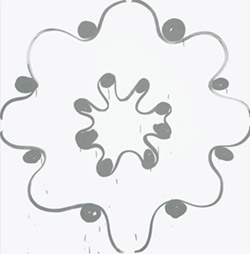

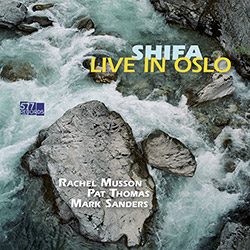
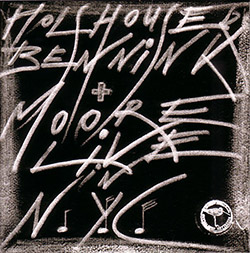
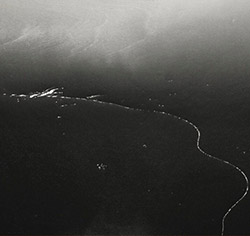
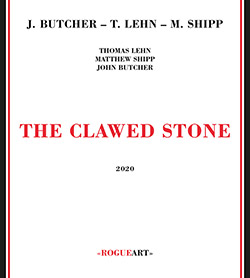

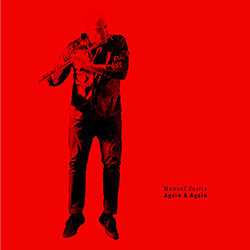
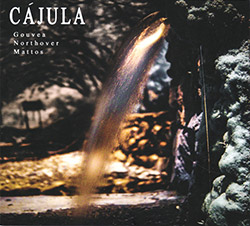
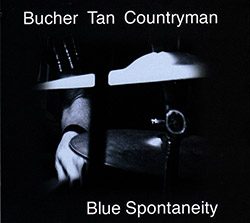
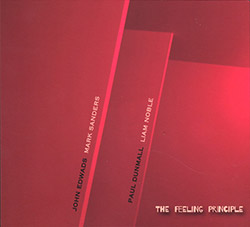

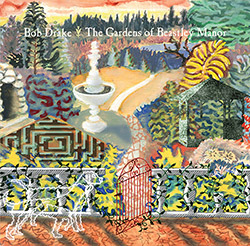
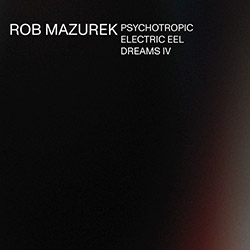
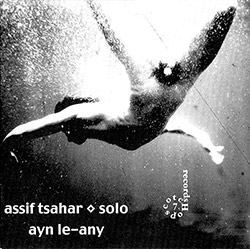


![Guy, Barry / Ken Vandermark: Occasional Poems [2 CDs]](https://www.teuthida.com/productImages/misc4/34849.jpg)
![Novoa / Carter / Mela Trio: Vol.1 [VINYL]](https://www.teuthida.com/productImages/misc4/35236.jpg)


![Elephant9 : Mythical River [VINYL]](https://www.teuthida.com/productImages/misc4/34624.jpg)
![Evans, Peter (Evans / Eldh / Black): Extra [VINYL]](https://www.teuthida.com/productImages/misc4/35279.jpg)

![McPhee, Joe: Straight Up, Without Wings [BOOK]](https://www.teuthida.com/productImages/misc4/35454.jpg)
![Jeck, Philip: rpm [2 CDs]](https://www.teuthida.com/productImages/misc4/35455.jpg)













![Barker / Parker / Irabagon: Bakunawa [VINYL]](https://www.teuthida.com/productImages/misc4/35533.jpg)
![Blaser, Samuel / Marc Ducret / Peter Bruun: Dark Was The Night, Cold Was The Ground [VINYL 10-inch]](https://www.teuthida.com/productImages/misc4/35492.jpg)








![Warren, Kenny (Warren / Hoffman / Ellman): Sweet World [VINYL]](https://www.teuthida.com/productImages/misc4/35451.jpg)




![Blake, Ran / Dave Knife Fabris: Live Amsterdam 2006, First Visit [CD + POSTCARDS]](https://www.teuthida.com/productImages/misc4/35275.jpg)













![DNS: Taking Big Bites Of The Khandas Three Cafes Deep [2 CDs]](https://www.teuthida.com/productImages/misc4/35334.jpg)




![Cleaver, Gerald: The Process [VINYL]](https://www.teuthida.com/productImages/misc4/34966.jpg)




![Alva Noto: HYbr:ID II [VINYL 2 LPs]](https://www.teuthida.com/productImages/misc4/35201.jpg)

![Baron, Derek / Luke Martin: Distinct and Concealed [CASSETTE + DOWNLOAD]](https://www.teuthida.com/productImages/misc4/35079.jpg)

![Lyle, Erica Dawn : Colonial Motels [CASSETTE + DOWNLOAD]](https://www.teuthida.com/productImages/misc4/35080.jpg)









![Sanna, Claudio: Compositori Sardi Contemporanei II [2 CDs]](https://www.teuthida.com/productImages/misc4/35317.jpg)







![Zurria, Manuel: Fame di Vento [3 CDs]](https://www.teuthida.com/productImages/misc4/35167.jpg)

![Granberg, Magnus / Nattens Inbrott / Skogen: Holde Traume, Kehret Wieder! [2 CDs]](https://www.teuthida.com/productImages/misc4/35038.jpg)
![Frey, Jurg: Outermost Melodie [2 CDs]](https://www.teuthida.com/productImages/misc4/35039.jpg)

![Pavone, Jessica: Reverse Bloom [VINYL]](https://www.teuthida.com/productImages/misc4/34895.jpg)




![Modney (Modney / Wooley / Gentile / Roberts / Pluta / Symthe / ...): Ascending Primes [2 CDs]](https://www.teuthida.com/productImages/misc4/34852.jpg)









![Elephant9 with Terje Rypdal: Catching Fire [VINYL 2 LPs]](https://www.teuthida.com/productImages/misc4/35355.jpg)
![Deerlady (Obomsawin, Mali / Magdalena Abrego): Greatest Hits [VINYL]](https://www.teuthida.com/productImages/misc4/34876.jpg)




![Haino, Keiji: Black Blues [2 CDs]](https://www.teuthida.com/productImages/misc4/35109.jpg)



![Surplus 1980: Illusion of Consistency [CD]](https://www.teuthida.com/productImages/misc4/35069.jpg)
![Staiano, Moe: Away Towards the Light [VINYL + DOWNLOAD]](https://www.teuthida.com/productImages/misc4/35037.jpg)



![Caveira (Gomes / Sousa / Abras / Ferrandini): Ficar Vivo [VINYL]](https://www.teuthida.com/productImages/misc4/34643.jpg)
![Gregg, J. J. / David Van Auken: Lunar Prairie [CD w/ DOWNLOAD]](https://www.teuthida.com/productImages/misc4/34611.jpg)

![Coultrain: Mundus [VINYL]](https://www.teuthida.com/productImages/misc4/32439.jpg)
![Mattin: Songbook #6 [VINYL]](https://www.teuthida.com/productImages/misc4/27317.jpg)
![Punkappella: Wake Up [7-inch VINYL]](https://www.teuthida.com/productImages/misc4/17519.jpg)
![Residents, The: WARNING: UNiNC.: Live And Experimental Recordings 1971-1972 [VINYL 2 LPs]](https://www.teuthida.com/productImages/misc4/31521.jpg)
![Coultrain: Phantasmagoria [VINYL]](https://www.teuthida.com/productImages/misc4/30142.jpg)
![Lennon, Sean Ono: Asterisms [VINYL]](https://www.teuthida.com/productImages/misc4/34517.jpg)

![Coley, Byron: Dating Tips for Touring Bands [VINYL]](https://www.teuthida.com/productImages/misc4/17906.jpg)

![Lost Kisses: My Life is Sad & Funny [DVD]](https://www.teuthida.com/productImages/misc4/lostKissesDVD.jpg)